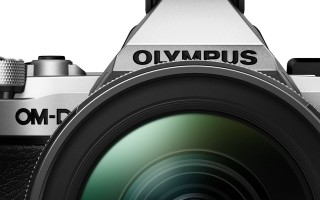Olympus OM-D E-M5 mirrorless camera review
Dmitry Krupsky
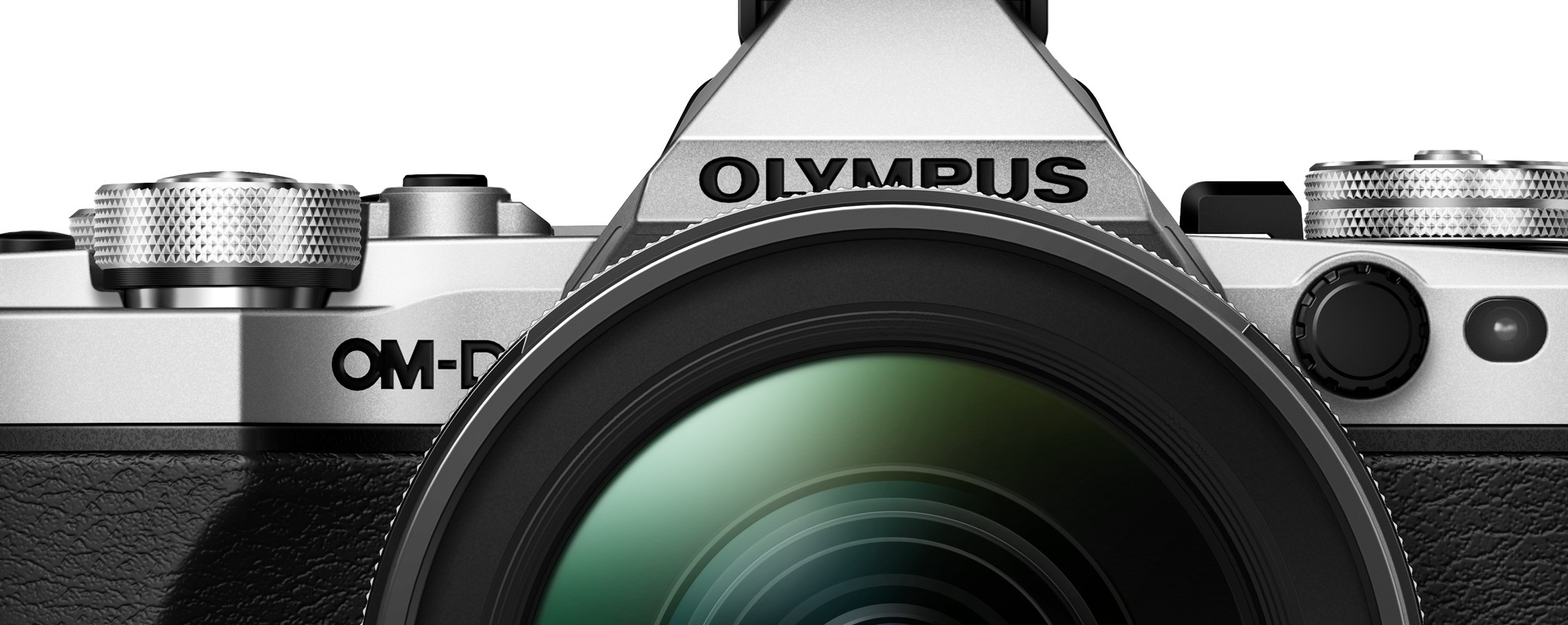
Olympus OM-D E-M5 II Review – Part 1 – Introduction
Olympus OM-D E-M5 Mark II is a mirrorless camera with interchangeable Micro-4/3 lenses. Rugged housing, five-axis image stabilization, TruePic VII processor, built-in EVI of 2.36 pixel resolution, rotatable touch monitor, Full HD video recording 1080@60/50/30/25/24p.
A unique new technology, first used in this camera, allows you to take high-resolution 40 megapixel images by shifting the matrix.

Officially the model is called the Olympus OM-D E-M5 Mark II, but for the most part I will write Olympus OM-D E-M5 II or even E-M5 II for brevity.
Main technical characteristics of Olympus OM-D EM-5 Mark II:
- Compact, lightweight magnesium alloy body, dust and waterproof.
- Matrix LIVE MOS resolution 16 MP 4/3 format (17.3x13.0 mm).
- High Res 40 MP mode – by combining eight images.
- Improved five-axis sensor-shift optical stabilization system (working for both photo and video shooting), with automatic recognition of the optimal mode taking into account panning (S-IS Auto).
- Dual-core TruePic VII processor.
- “2x2” interface concept – the lever switches the functionality of two control dials.
- Touch monitor with a diagonal of 3″, resolution 1.03 pixels, 3:2 format, rotatable in two axes.
- High resolution electronic viewfinder 2,360,000 dots with 100% field of view.
- Sensitivity range from ISO200 (expandable to ISO100) to ISO25600.
- Fast shutter speeds from 1/8000 second (and from 1/16000 second with electronic shutter).
- Continuous shooting up to 10 fps.
- Autofocus with 81 zones (9x9), with group selection, face and near-eye detection.
- Picking function for manual focusing (outlining objects that are in focus).
- Subject programs and effects of artistic processing "Art filters".
- On-the-fly correction of perspective distortion.
- Video recording in Full HD 1080@60/50/30/25/24p resolution, ALL-I format with a stream of 77 Mb/s (at 30/25p), IPB with a stream of 52 Mb/s. Options for fast and slow video recording.
- Stereo sound recording when shooting video, connector for external microphone.
- Connector for connecting an external flash and other accessories.
- Built-in Wi-Fi for remote control and file transfer to external devices.
The Olympus OM-D E-M5 II replaces the popular OM-D E-M5. Popular without exaggeration - according to data recently published by one of the largest photo sites Flickr, this model is the leader in the number of uploaded photos among mirrorless cameras of all manufacturers. Moreover, it has been in the lead for two years – 2013 and 2014, which is especially impressive for a dynamically changing photo market.
You can immediately notice that the E-M5 II has received a number of features from the top-end mirrorless camera Olympus OM-D E-M1. This includes a TruePic VII processor, a built-in high-resolution viewfinder, and a 2x2 interface system. Taking into account the all-weather performance of the E-M5 II, significantly improved video recording and a new unique technology for obtaining 40-megapixel images, it is now even unclear which model should be considered the flagship.
The feature that I think is the most important in the E-M5 II is High Res technology, which allows you to take high-resolution 40 MP images. Although the matrix itself has a resolution of 16 megapixels, the camera sequentially takes eight quick shots, each time shifting the matrix by a small amount, and then these images are added to the resulting 40-megapixel file.

We will tell you more about this function on the next page, and in further testing we will pay close attention to it.
The excellent image stabilization system, which I consider one of the strongest features of Olympus mirrorless cameras, according to the developers, has become even better and now provides compensation up to five stops. Moreover, it works both when taking photographs and when recording video (in the second case, in combination with electronic image stabilization).
Olympus E-M5 II has a protected housing design. The manufacturer especially emphasizes this circumstance. The following illustration shows the location of secure connections, both in the camera itself and in the lens (in the picture - MZD 12-40 / 2.8 Pro).

Of course, the all-weather design expands the camera's capabilities for professional use.

The Olympus E-M5 II is compatible with a variety of accessories. The HLD-8 battery pack allows you to increase the battery life of the camera, and can also be used to more securely fix the camera on an uneven surface.

The Olympus OM-D E-M5 Mark II will be available at the end of February 2015 in silver and black. In addition to just a camera without lenses (62,999 rubles), kits with various M. ZUIKO lenses will be available.
So, a kit with MZD 12-50/3.5-6.3 will cost 69,999 rubles, and with a new compact lens MZD 14-150/4.0-5.6 with silent focusing (shown in the previous illustration) – 79,999 rubles. These lenses are dust and splash resistant.
The Olympus E-M5 Mark II does not have a built-in flash, but all versions include the compact, dust- and splash-proof detachable FL-LM3 flash.
To complete the impression, here are a couple more illustrations with accessories. External microphone...
Review of Olympus OM-D E-M5 Mark II. First impressions
I am a portrait photographer, doing mostly studio photography. I work on a Canon system. Currently I have a Canon 5D Mark III and a small compact for “pocket” use, a Canon G10.
Everything flows, everything changes, and today’s camera market is rapidly developing towards system cameras. Now any self-respecting manufacturer considers it necessary to release their mirrorless camera. Agree, it is still more convenient to walk or travel, even just to have at hand a small and light device with all the functions and image quality that are not inferior to a large and heavy SLR camera. And although my “ten” is still quite functional, I still decided to buy myself a system camera.
It took me a long time to choose. As I already said, the market for mirrorless cameras is large, for every taste and color. Here, too, there is a struggle for the pixel and matrix size in order to attract a buyer. And I was looking for “my” camera. Olympus somehow immediately attracted my attention. Maybe because I once shot on film with this particular system, I don’t know.
 © Yulia Sitokhova
© Yulia Sitokhova
Of all the Olympus system cameras presented, I chose the OM-D E-M5 Mark II and have never regretted it. Lightweight, compact, with many buttons that can be programmed for each shooting mode. Convenient and, most importantly, a huge optical park. And it doesn’t matter that the crop sensor 2 is compared, for example, with Sony, which released a full-frame mirrorless camera with interchangeable lenses, the main thing is image quality and ease of use. All this turned out to be excellent.
 © Yulia Sitokhova
© Yulia Sitokhova
Someone wrote that the menu was inconvenient and complicated. I don't agree. Everything is very clear. And with the ability to program buttons, it’s also convenient. You just need to sit, read and watch for a while.
 © Yulia Sitokhova
© Yulia Sitokhova
I won't go into technical details and camera specifications. You can read about this in more technically competent sources. Here, for example, you can read a very detailed test of this camera here or here. The latter helped me finally decide. I’ll just share the first impression of an outsider, so to speak.
 © Yulia Sitokhova
© Yulia Sitokhova
First impressions
The camera has many preset automatic programs: e-Portrait - the camera smoothes skin tone for viewing on HD TV, macro, shooting with wiring, etc. It is possible to slightly adjust them. Creative filters are built-in - they are fun to work with. There is such a function as correcting perspective right during shooting. The built-in Wi-Fi module allows you to immediately transfer footage and control the camera from a smartphone or tablet. The camera has a built-in five-axis stabilizer, which allows you to shoot handheld in low light with almost no blur. And shooting video with such a stabilizer is simply a fairy tale - you don’t need a steadicam.
 Olympus OM-D E-M5 Mark II + M.Zuiko Digital ED 12-40mm f/2.8 Pro, Diorama effect, Camera JPEG. © Yulia Sitokhova
Olympus OM-D E-M5 Mark II + M.Zuiko Digital ED 12-40mm f/2.8 Pro, Diorama effect, Camera JPEG. © Yulia Sitokhova
The first frames taken with this camera simply shocked me with their quality. Tenacious autofocus, and, most importantly, fast - before you have time to think, it’s already focused. The rotating screen and absolutely silent shutter mode make the camera a convenient weapon for a reporter. High detail will appeal to landscape photographers, and with the 40-megapixel 40M Hi Res Shot mode it will be interesting to shoot still lifes and objects.
 Olympus OM-D E-M5 Mark II + M.Zuiko Digital ED 12-40mm f/2.8 Pro, Auto Macro Mode, Camera JPEG. © Yulia Sitokhova
Olympus OM-D E-M5 Mark II + M.Zuiko Digital ED 12-40mm f/2.8 Pro, Auto Macro Mode, Camera JPEG. © Yulia Sitokhova
I shot in different automatic modes. Since I always shoot raw+jpeg, I had the opportunity to compare the images and evaluate the performance of the camera processor - camera jpeg is beyond all praise. Well, if something doesn’t suit you, you can “pick” raw.
 Olympus OM-D E-M5 Mark II + M.Zuiko Digital ED 12-40mm f/2.8 Pro, Auto Mode, Camera JPEG.
Olympus OM-D E-M5 Mark II + M.Zuiko Digital ED 12-40mm f/2.8 Pro, Auto Mode, Camera JPEG. © Yulia Sitokhova Olympus OM-D E-M5 Mark II + M.Zuiko Digital ED 12-40mm f/2.8 Pro, Auto Macro Mode, Camera JPEG.
© Yulia Sitokhova Olympus OM-D E-M5 Mark II + M.Zuiko Digital ED 12-40mm f/2.8 Pro, Auto Macro Mode, Camera JPEG. © Yulia Sitokhova Olympus OM-D E-M5 Mark II + M.Zuiko Digital ED 12-40mm f/2.8 Pro, Auto Macro Mode, Camera JPEG.
© Yulia Sitokhova Olympus OM-D E-M5 Mark II + M.Zuiko Digital ED 12-40mm f/2.8 Pro, Auto Macro Mode, Camera JPEG. © Yulia Sitokhova Olympus OM-D E-M5 Mark II + M.Zuiko Digital ED 12-40mm f/2.8 Pro, Auto Mode, Camera JPEG.
© Yulia Sitokhova Olympus OM-D E-M5 Mark II + M.Zuiko Digital ED 12-40mm f/2.8 Pro, Auto Mode, Camera JPEG. © Yulia Sitokhova Olympus OM-D E-M5 Mark II + M.Zuiko Digital ED 12-40mm f/2.8 Pro, Handheld Macro, Camera JPEG. © Yulia Sitokhova
© Yulia Sitokhova Olympus OM-D E-M5 Mark II + M.Zuiko Digital ED 12-40mm f/2.8 Pro, Handheld Macro, Camera JPEG. © Yulia Sitokhova
As for the manual mode, I tested the camera on studio shooting and again was completely delighted. Of course, a mirror would be better in terms of image quality, but still Olympus pleasantly surprised and impressed. I took the camera with the M.Zuiko Digital ED 12-40mm f/2.8 Pro lens - it’s luxurious and very convenient, taking into account the fairly high aperture ratio plus a minimum focusing distance of only 0.2 meters, you can shoot a very wide range of scenes with it. Very good glass. I recommend it as a kit. Full-field sharpness, high detail. The picture is great for a zoom, but in other frames you can’t tell the difference from a fixed lens. Maybe in time I’ll get a Panasonic Leica 42.5mm 1.2 for portrait photography – time will tell.
The camera comes with an FL-LM3 flash. The flash can be used in both vertical and horizontal orientation. It is also possible to use bounce flash. Very comfortable.
Canon 5D MkIII VS OM-D E-M5 MkII


Disadvantages of Olympus OM-D E-M5 Mark II
There are some minor drawbacks, but what would we do without them? In my opinion, it would be possible to turn on Wi-Fi with a programmable button, but otherwise you have to go into the menu. There is no built-in GPS module, which for some will seem like a big minus, for me personally this is not a crime, and the battery lasts longer because of this. But the battery is rather weak (350-400 frames) - you must definitely buy an additional one so as not to be left in the middle of shooting with a discharged battery. A small grip handle, I would like a little more so as not to bother with additional equipment - although if you make the grip larger, like, for example, the M1, then goodbye compactness. The belt fastening has become a little different compared to the previous version - it’s a little uncomfortable for me, it gets in the way, but still a person gets used to everything. Well, maybe I’ll forget about it soon.
Conclusion
Conclusion from the first impression – I really liked the camera. Shooting with her turned out to be convenient and high-quality. I have never once doubted my choice. I am pleased. It may not replace the DSLR, but it will still perform its functions 100% - trips, walks, business trips, even just test shots will now become “easier” and of better quality. The build quality and materials are beyond praise. Excellent viewfinder, rotating screen - convenient for transportation, can be closed. A huge number of settings and functions for every taste. Although the level (and price) of the camera is clearly not for beginners, they have not been forgotten either. The flexibility of control, including the function keys, is simply excellent. STABILIZER. Handheld, with a focal length of 40 mm (equivalent to 80 mm on full-frame) with a shutter speed of 1/2 second - calm. Working ISO 3200 inclusive. Dust and moisture protection. Large selection of optics, both from Olympus and Panasonic. Add to this the ability to install virtually any glass from any system via an adapter - and the widest scope for creativity opens up. And yet the main thing is the quality of the photo. Although the sensor is not the latest, 16 MP, the photo quality is excellent. This is in general. And then everyone decides based on their own tastes, family budget and the tasks assigned to the camera.
Finally, I want to say: don’t look for the “masterpiece” button on the camera, look for it in your soul.
I am Yulia Sitokhova - portrait photographer Yael. The main type of activity is portrait photography in all its manifestations. My task is to capture emotions and preserve the memory of them in photographs. And photography for me is not just a job or a hobby, it is a piece of my and your soul .
Olympus OM-D E-M5 mirrorless camera review
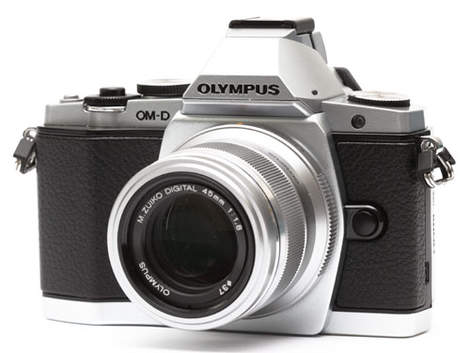
Unlike Panasonic, Olympus decided to take a conservative approach to the release of Micro 4/3 standard mirrorless devices. If Panasonic was able to almost immediately release an advanced model, the Lumix GH1, then Olympus for quite a long time produced only relatively compact Pen series cameras, but the “top” segment was demonstrated only with SLR cameras. The Olympus OM-D E-M5 now completely changes that whole situation.
With the release of the E-M5, Olympus was able to open a new series called OM-Digital.
Technical data of this camera
• Technology: LiveMOS,
• Resolution: 16 MP.
• Matrix manufacturer: Panasonic.
• Built-in flash: no.
• Image stabilization: yes, due to matrix shift.
• Dust removal system: yes, ultrasonic.
• Exposure compensation: ±5 EV.
• Screen: 3″, OLED, resolution 640x480 pixels.
• Supported lenses: 4/3 lenses, Micro 4/3 lenses;.
• Exposure metering: ESP (matrix), spot, center-weighted.
• Power: Lithium-ion battery.
• Dimensions: 122x89x43 mm.
• Weight: 425 grams
4 reasons to buy Olympus OM-D:
• beautiful design;
• high “rate of fire”;
• compact dimensions;
• excellent photo quality;
1 reason not to buy an Olympus OM-D:
• Autofocus system misses.
If you urgently need a business card website, which must be made in the shortest possible time at low prices, then the Megagroup company will create an Internet resource for you quickly and at low prices.

Olympus' PEN E-PL9 has 4K and image stabilization
Olympus has unveiled the PEN E-PL9, its smallest Micro Four Thirds mirrorless camera yet, adding 4K video and in-body stabilization. The new model carries the retro look of its predecessor.

Olympus has created $1,500 glasses that are open source
Olympus is reviving the EyeTrek brand it used at the turn of the century to sell a series of head-mounted displays that were as ahead of their time as they were problematic. But com.
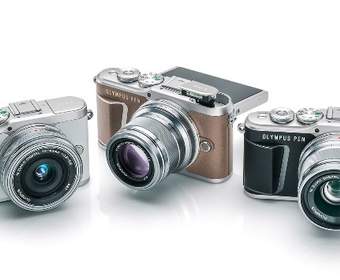
Olympus E-PL9 4K mirrorless camera arrives for $600
The Olympus E-PL9 with 4K and 3-axis body stabilization is a good example of how mirrorless cameras are winning over consumers by offering pro features for a small amount of cash.
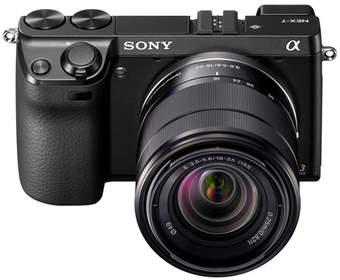
Sony Alpha NEX-7 mirrorless camera review
The Sony NEX-7 camera, demonstrated exactly a year ago, still remains one of the most popular on the market. Unlike many other models of the NEX series, which are designed for the novice amateur photographer, .
The Olympus OM-D E-M5 Mark III mirrorless camera received many solutions from a higher-class model

Despite the fact that the manufacturer paid great attention to compactness in the new Olympus OM-D E-M5 Mark III , the camera is equipped with advanced components that could previously be seen in the more advanced model OM-D E-M1 Mark II (released in 2016).
It uses the same 20-megapixel matrix and a hybrid 121-point autofocus system.
Compared to its predecessor (E-M1 Mark II), the model has become noticeably smaller. Separately, attention is drawn to the rather advanced splash protection.
Separately, attention is drawn to the rather advanced splash protection.
The manufacturer even emphasized this feature with a separate slide.

Let us remind you that Olympus system cameras use matrices (sensors) of standard size 4/3” (crop 2.0) and belong to the Micro Four Thirds system. The unveiled OM-D E-M5 Mark III is no exception.
The camera has a very advanced 5-axis built-in stabilization system. It is stated that it provides a gain of up to 5.5 stops in shutter speed.
This system can also work in conjunction with in-lens stabilization (if the lens has such a system). In this case, the gain may already be 6.5 steps.

The camera is quite productive. Continuous shooting speed reaches 10 fps with autofocus tracking.
There is a special mode for enhancing clarity Tripod High Res Shot . A series of pictures is taken with the matrix shifted by 0.5 pixels. The final image is assembled from this series of frames.
The technology is not unique. Today, many cameras have similar functionality. As you can see from the name, the mode involves the use of a tripod.
Today, many cameras have similar functionality. As you can see from the name, the mode involves the use of a tripod.
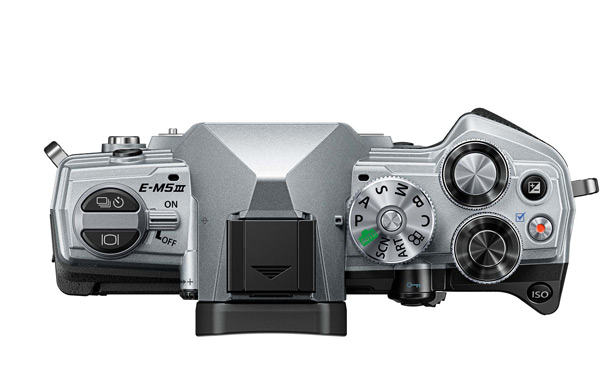
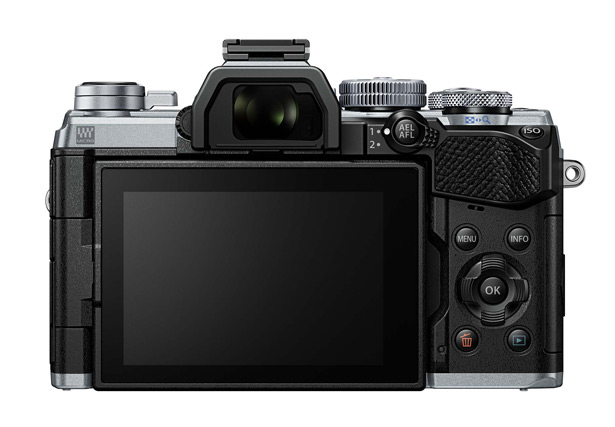
The maximum speed for 4K video recording is 30 fps. The camera can also shoot in the advanced C4K format (4096 x 2160 pixels) with a bitrate reaching 237 Mbps (megabits per second).
An input for an external microphone is available, but there is no output for headphones.
The built-in digital viewfinder (of course) has a resolution of 2.36 megapixels. An OLED matrix is installed, providing excellent contrast and rich colors.
An OLED matrix is installed, providing excellent contrast and rich colors.
The camera battery can be charged from the USB port.
Color options include all black and black with silver top.
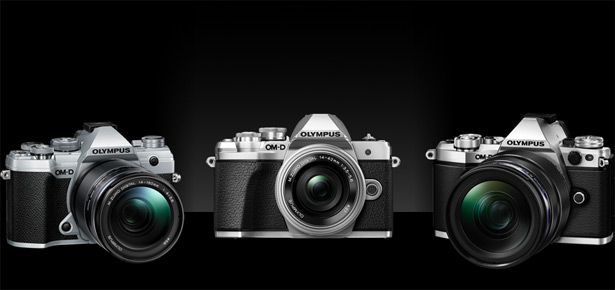
The Olympus OM-D E-M5 Mark III mirrorless camera will be available in Europe by the end of November 2019.
The recommended price for the Olympus OM-D E-M5 Mark III without lens is €1,200.
A set of Olympus OM-D E-M5 Mark III camera and M.Zuiko Digital ED 12-40 F2.8 PRO lens will cost €1900, and a camera option with M.Zuiko Digital ED 12-200 F3.5-6.3 lens costs € 1800.
Fine
Links
Olympus OM-D E-M5 // Field test in Crimea
« previous entry |
next entry » Dec.
8, 2013 | 03:54 am
In early August, 1 day before leaving for Crimea, the Olympus representative office wrote to me, offering the then flagship camera OM-D E-M5 for testing. The offer is unexpected and pleasant. The topic of compact mirrorless cameras is very relevant to me now. Sincere and incorruptible impressions of the camera inside the post!
Getting to know your camera always starts with opening the box. And in this case. Well, you see everything for yourself. Premium! 🙂 Very rich presentation. Rigid black case with a hinged lid. The kit includes the Olympus OM-D E-M5 , an Olympus ED 12-50mm f/3.5-6.3 EZ , a small external flash, charging and other necessary little things. Bonus - a second leather strap! 🙂 In addition, they provided me with an Olympus M.Zuiko 45 f/1.8 . I suggest you familiarize yourself with the main characteristics of the camera at the link: OM_D EM-5 on Yandex.Market.
Part 1. General impression
After the first WOW effect from the packaging, we begin to look closely at the details and touch. “If you pick it up, you wave the thing!” - this is about OM-D EM-5. The simply gorgeous workmanship of all the details gives you confidence and the feeling that this “baby” aspires to be a professional camera.
At that time, I had a Sony NEX-6 as my daily camera. A super-technological camera, one of the leaders in its class. Therefore, I had a chance to compare Olympus with it, because their characteristics are similar. As are the dimensions. The OM-D is slightly larger than the NEX-6. But at the same time, the controls will seem too small to many. However, you can quickly get used to this and with regular shooting there are no special problems.
For the design we give the camera a solid A+. If it weren't for the small buttons, it would be 5+. I really like that the designers preserved the traditional shape of the camera, simulating the presence of a prism. This makes the Olympus look like an adult camera. Despite the fact that both cameras shoot at a comparably high level, the NEX-6, compared to the OM-D E-M5, looks like just an amateur point-and-shoot camera.
And from this follows an unexpected HUGE advantage of this camera for me! Thanks to its serious appearance, you can bring it to a commercial shoot, and the customer will not be surprised to watch the photographer shoot a high-budget order on some kind of point-and-shoot camera. But will the OM-D E-M5 be able to compete in image quality with professional DSLRs? Read about that in the next chapter.
Part 2. Working with the camera. Photo quality
In almost all respects, the camera caused me complete delight. I'll start with the basics.
Color rendition and dynamic range // The realization of why the Olympus OM-D pictures captivated me did not come immediately.

Along with good color, the camera has an impressive Dynamic Range. RAW is just rubbery. In my opinion, overexposure shadows are corrected no worse than in the legendary Nikon D800. Although the DxO Labs charts do not confirm these words. Lights are drawn out especially well, and they often contain all the necessary color information, without “whiteness”.
Perhaps, from no other camera have I received a color that satisfied me so quickly in Lightroom.
Auto White Balance works great.
A little more about “rubber” RAW. Examples of frames before and after processing in Lightroom.
And just photos on the topic of color and DD with links to full size. EXIF is saved in full-size files.
Matrix noise and stabilization // No revolutions at this point. We remember that the sensitivity of the matrix is reduced to the sacrifice of better color rendition. Although the picture quality is still among the leaders in the mirrorless segment. It's a pity that the lower ISO value in the camera starts at ISO200. Noticeable noise appears at ISO800, but I shot at ISO1600 without irritation - the nature of the noise is not objectionable. There is probably no point in going above 1600. If you shoot in JPEG, the in-camera noise reduction works very aggressively. Everything looks much better when processed in Lightroom.
But the OM-D EM-5 has a trump card in its pocket that can negate the above-mentioned disadvantages. The new five-axis matrix stabilization system makes the image simply freeze on the screen. The stabilizer is built into the camera, which means it will work with all lenses. I read somewhere that this is the best stabilization system that is currently on the market. Shooting handheld at a shutter speed of 1/5, I consistently got sharp images. A specific example is below.
ISO 1600. Exposure compensation in Lightroom + 0.5. Olympus M.Zuiko 45 f/1.8 lens. The lens is amazing, by the way. 🙂
In-camera JPEG without processing. ISO 1600, shutter speed 1/10. You can see how aggressively the noise reduction built into the camera works. But the stabilization system is excellent. Filmed on the go.
You can get a little idea about the quality of stabilization from the video. Despite the strong wind, hand tremors are practically invisible in the frame. By the way, Olympus also writes videos very well, although this is not its strong point. In terms of video, the capabilities of the same Sony NEX-6 are much richer.
Autofocus // Guys, it's very fast! This cannot be demonstrated in photographs, so take my word for it. At the moment, this is one of the fastest cameras on the market for this parameter. In Crimea, the main camera was Nikon D800. So Olympus is at least no worse in focusing speed. Sony NEX-6 never dreamed of this. 🙂
Part 3. Features of the OM-D system
Olympus cameras have their own unique character, if only because they use a 4/3 format sensor with a crop factor of 2. This means that:
1) the usual focal lengths of lenses must be multiplied by 2
2) the depth of field increases (which is good for MACRO shooting)
3) other frame proportions force you to compose the frame differently
By the way, about a different frame layout. If at the beginning it was unusual for me, now, on the contrary, it seems to me that the 4:3 format is much more universal for use. It makes it easier to compose any plot. It's great for portrait photography. In addition, 4:3 aspect ratio is the standard for tablets, iPads and many other devices. Photos ideally occupy the entire screen area. But that's not all! ) When processing frames in Lightroom, the photo also fits perfectly between the settings menu.
Now about MACRO shooting and the Olympus ED 12-50mm f/3.5-6.3 EZ . Due to the small size of the sensor, this camera makes it easier to photograph small objects. And even with the help of a standard lens you can shoot real MACRO. This lens is the epitome of versatility. In terms of standard values, its focal lengths are 24-100, which allows you to shoot any scene. Here are examples of frames below, at the widest shooting angle, and at maximum “zoom,” as many people like to say. There's no better way to travel!
It would seem like an excellent lens, what more is needed. But the engineers added a motor to it, and when you move the zoom ring slightly forward until it clicks, the lens acquires the ability for perfectly smooth zoom, which is very important when shooting video. Great feature, what more could you ask for? But the engineers did not calm down here either, adding a full-fledged macro mode to this lens. I only realized how to use it at home. Do you see the “MACRO” button at the bottom of the lens? The secret is to hold down this button and move the zoom ring even further forward, all the way. And in this case, the lens becomes a prime lens and a full-fledged makrik!
The only noticeable drawback of this lens is that it catches a lot of glare.
And finally, such presets for processing frames in the camera are puzzling. Who needs this?
The Olympus OM-D E-M5 is a camera with soul. Even with its appearance, it inspires creativity, being a powerful professional tool. With this compact mirrorless camera you can easily shoot in any genre of photography: weddings, product photography, studio portraits. And no one will express bewilderment that you came with a “soap box”. A resolution of 16 megapixels is enough for most tasks.
Among the noticeable disadvantages I can note small buttons on the camera body, the lack of ISO100 and the relatively high noise of the matrix. Irritating sensor operation when, when viewing photos or focusing, the screen suddenly goes dark, switching the image output to the built-in electronic viewfinder.
While I was gathering my thoughts to write this review, a new camera from the OM-D E-M1 family was released. In essence, this is a modified E-M5: it has a larger body, larger buttons, a modified sensor for turning off the display and changes in the interface. But the matrix remained the same as on OM-D. So everything that I wrote about picture quality also applies to the new camera.
I have already sold my NEX-6, and as soon as all the stars align, I will get the same OM-D E-M5. 🙂 In the next post I will show several photos from a summer trip to Crimea, taken on a Nikon D800 in combination with Olympus. Stay in touch! 😉
Sergey Dolya Sergey Dolya
Virtual Travelers Page
Subscribe to our newsletter
Olympus OM-D E-M5 Mark II camera test
About once a year I look towards mirrorless cameras. The first experience was in Georgia in 2012, the second in the Galapagos in 2013. I see that these devices are evolving significantly from year to year, so I gladly accepted the invitation to go to Prague in order to test the new Olympus OM-D E-M5 Mark II.
This camera has two main differences from its competitors: a unique five-axis stabilization system, which allows you to shoot sharp images handheld in the dark at long shutter speeds, and the ability to take 40 megapixel frames, despite the fact that the matrix is only 16 megapixels. How? The answer is under the cut.
In general, I’ll admit right away that I’m not good at writing reviews about cameras. I was in Prague with the famous journalist Dmitry Krupsky, who specializes in them, so if you want to read a detailed and easily written in-depth report on the camera, then this is the place for you.
I’ll tell you more about the emotions that this device evoked in me, but I want to make a reservation right away that I compared it with my Nikon D4, so maybe this is not very fair, since they are in completely different weight and price categories.
After the huge Nikon, this one, of course, weighs nothing. If you attach a large lens to it, the balance of the camera is upset, but due to the overall low weight, this does not interfere.
A very convenient little window that can be unfolded and moved away. You can easily take interesting photos from a low vantage point or by raising the camera above your head.
The control buttons are quite clear and conveniently located. The camera is very smart and you can program every button, of which there are enough, for yourself.
Among the inconveniences: it was not very convenient for me to turn on/off the camera (the button is on the left and you need a second hand to turn it on). I also sometimes lost the settings, because while wearing it on my shoulder, I touched the settings wheels, which rotate too easily, and knocked them down.
Otherwise there were no questions. I got used to the controls pretty quickly.
The camera is also stated to be splash-proof. That is, it is still better not to put it under water, but in heavy rain you can remove it without problems.
The camera has five-axis stabilization. These axes are: right/left, up/down and 3 axes of camera rotation (see arrows in the picture). The system is very advanced and thanks to it it allows you to take sharp pictures even in poor lighting. Olympus considers this the main breakthrough and the main feature of its new camera. It's hard to disagree with this.
We shot a lot in the dark. Yes, almost everything! Examples of frames are at the end of the post.
3. 40 megapixels
This is an interesting mode, but it only works with a tripod and is suitable for photographing static objects. The camera takes 8 pictures in a row, each shifted by a poppixel. After this, the image is stitched together and the result is 40 megapixels. Therefore, without a tripod it turns out to be a mess.
Interesting idea and implementation. Photos come out very clear and sharp. Suitable for photographing objects and landscapes in calm weather. Examples of photographs are at the end of the post.
The thief is just one example. This is a crop from the large photo shown in the lower right corner. Please note the number of parts:
With this stabilization system, steadicams, gyrostabilizers and other stabilization systems are no longer needed. We shot a short video. Everyone in our group played the role of videographer. For example, I ran after the main characters through the tunnel where Tom Cruise ran before us in one of the Mission Impossible episodes. Not all parts in the video were filmed by us. The ones on the bridge in Prague were filmed without us to make an interesting story. The point is that any untrained person can take this camera and shoot cool videos.
Pay special attention to the moment when the camera “comes out” of the car. They filmed it as follows: one person first rode in a car and filmed, and when the car stopped and the driver started to get out, he simply handed it into the hands of a man on the street and he continued filming.
Notice that there is very little camera shake. This is the work of the stabilizer. All shots were shot in one take& Watch in HD:
5. Painting with light
The camera has a lot of functions, presets, processes and everything you want. In my opinion, even too much. The camera should not take over the Lightroom function.
Separately, I want to talk about the trick of shooting painting with light. If previously light paintings had to be shot in completely dark conditions, now this is no longer necessary. The camera takes a series of shots. It remembers the first frame, and from each subsequent one it takes only new light areas and superimposes them on the previous ones.
I remember in the Maldives I forced my family to sit motionless for 30 seconds while I frantically ran behind me with a flashlight and drew the word Maldives. Naturally, within 30 seconds they were smeared. Here we shot the frame for 5 minutes, but the person in the frame was illuminated once, so it turned out to be absolutely sharp.
At the end of the post there are some more amazing paintings painted with light.
This, of course, is a complete failure. I don’t know how it is in other mirrorless cameras, but the batteries only last about 4 hours. That is, you need to take at least one, and preferably 2, spare batteries with you per day.
A full line of accessories will be available for the camera, ranging from an underwater housing and flash to a huge number of interchangeable optics.
8. Image quality
At first I shot everything in raw format and, out of habit, I wanted to process all the photos, but I ran into two problems. Firstly, the camera is still too new and Lightroom does not understand its files and cannot import them. Secondly, if I show processed photographs, it will not be very honest.
Therefore, all the photos in this and the next post are jeeps taken directly from the camera, without any processing (I just corrected the horizon here and there).
See and judge for yourself
The Olympus OM-D E-M5 Mark II is certainly a breakthrough in mirrorless cameras, but in terms of image quality it does not yet reach full-frame DSLRs, so decide for yourself what is more important to you - weight and convenience or picture quality.
Well, now, actually, examples of photographs.
40 megapixel mode. Shot on a tripod. The book was very small in size. If you fully enlarge the frame, you can easily read what is written in it:
Everyone shot a hundred tripods:
And this was hanging nearby. In general, Olympus compares itself with Sony and Fuji, and treats Canon and Nikon with disdain, as not coming up with anything new and losing the battle. Here, of course, I disagreed with them:
The moment of filming. Just when the camera was being handed over:
And this is a shot taken during the shooting of the video. It has a different format:
Tom Cruise ran in these tunnels in Mission: Impossible:
A bright spotlight at the end of the tunnel. The picture was very beautiful:
I ran through this tunnel with the camera at arm's length following the characters in the video. I must admit that the picture hardly shakes:
And then the camera didn’t have time to adjust to fast movement and the actor got a little blurry:
We filmed at an old water station. It has not been working for a long time, but all the mechanisms remain:
They turned on the lights in one of the rooms, blew in some fog for volume, and put two models at our disposal:
They filmed in two locations: upstairs, where it was brighter, and downstairs, in the light of dim streetlights. Here the camera did not cope with the task very well. The face is all burned out, the shadows are gone. But the picture is sharp, although the shutter speed is only 1/13 of a second. This is the work of the stabilizer:
It's better here. Here I used -2.3 stops of exposure compensation to bring out the texture on the face. The shadows are gone forever:
General view of the room with lighting scheme:
The most spectacular thing was painting with light. Everyone was lined up with tripods and given hats - it was cool in the basements:
Well, then the beauty and imagination of artists:
Artists' working tools:
In the next post I will show photos from a walk around Prague taken with this camera, so you can evaluate the quality of the picture in normal urban conditions. Stay Tuned!
New: Olympus OM-D E-M5 Mark II Mirrorless Camera
Exactly three years have passed since the official announcement of the OM-D E-M5, the most successful mirrorless camera in recent years. Olympus, of course, did not sit idly by and managed to please us with two other cameras of the OM-D series - E-M1 and E-M10, however, a full update of the E-M5 is only being released now - the new model is called Olympus OM-D E-M5 Mark II and claims to be the most high-tech mirrorless camera ever released.


The main highlight of the original model was its excellent five-axis image stabilization system. In the new camera it will appear in an improved form. Stabilization is still carried out on five axes, but the gain in exposure is now up to five stops (5 EV).

To put things into perspective, imagine that you can now get a sharp shot with a 25mm lens at a shutter speed of 1/4 second. Moreover, the stabilizer fully works in video recording mode, and the video recording mode itself has been significantly improved.
Specifications
Olympus OM-D E-M5 Mark II
Olympus OM-D E-M5
mirrorless camera with interchangeable lenses
mirrorless camera with interchangeable lenses
CMOS (17.3x13 mm) 16.1 MP, crop factor 2.0
CMOS (17.3x13 mm) 16.1 MP, crop factor 2.0
interchangeable, Micro Four Thirds mount
interchangeable, Micro Four Thirds mount
RAW, JPEG (4608×3456), 40 MP (composite mode)
RAW, JPEG (4608×3456)
H.264/MPEG4 (1920×1080, 60 fps) 77 Mbps
H.264/Motion JPEG (1920×1080, 30 fps)
ISO 200–12800 (expandable to 25600)
LCD, diagonal – 3″, resolution – 1,047,000 dots, tilt-rotate design
OLED, diagonal – 3″, resolution – 610,000 pixels, inclined design
electronic, resolution - 2,360,000 pixels, 100% frame coverage, magnification -1.48x
electronic, resolution - 1,440,000 pixels, 100% frame coverage, magnification -1.15x
built-in missing + external flash included
built-in missing + external flash included
SD/SDHC/SDXC cards (up to 128 GB)
SD/SDHC/SDXC cards (up to 64 GB)
BLN1, lithium-ion, 1220 mAh
BLN1, lithium-ion, 1220 mAh
124x85x45 mm, 469 g
122x89x43 mm, 335 g
But the resolution of the matrix is not at all impressive. Let me remind you that the original Olympus OM-D E-M5 model was released in the first quarter of 2012 and was built on the basis of a 16-megapixel Live MOS sensor. The new camera is based on exactly the same matrix, with exactly the same resolution. It seems that from a technical point of view nothing has changed. But it is not so. For those who really need higher resolution, a composite shooting function has appeared, giving an output 40-megapixel image. In this mode, the camera takes up to 8 shots sequentially with a slight shift of the matrix, and then combines them into one image. The same approach was used by Hasselblad, which claimed 200 megapixels. Yes, the increase in resolution in this mode is almost fair. But the composite mode is only suitable for leisurely shooting - landscape or studio photography, when the camera is on a tripod and the shutter speed is quite short. There is one more limitation - the subject must also be motionless. We'll show an example a little later.


In general, improvements have been made to almost every aspect of the camera. If previously you had to deal with a minimum shutter speed of 1/4000 of a second, now the mechanical shutter of the camera works at 1/8000, and the electronic shutter allows you to shoot at 1/16000 of a second. But it should be noted that the Olympus camera is not unique in this - this is one of last year’s mirrorless trends.

The display of the OM-D E-M5 Mark II has a hinge mount on the left, and now rotates as desired, which gives greater freedom in choosing angles compared to a simpler inclined screen design. The viewfinder has greatly increased its resolution (now 2.36 megapixels) and reduced latency, which is perhaps a more noticeable improvement.


In video recording mode, the camera is capable of saving a stream in a resolution of 1920x1080 pixels at a frequency of 60 frames per second. The maximum bitrate is 77 Mbit/s, while the original model was only capable of 20 Mbit/s. True, the frame rate there was lower - 30 fps. Another nice feature is the ability to use the touch screen to focus in video mode.
The burst shooting speed has also increased slightly. There were 9 frames per second, now 10. In both cases we are talking about shooting with the focus fixed on the first frame. In the case of working autofocus, the rate of fire of the OM-D E-M5 Mark II is reduced to 5 frames per second. The previous model boasted a figure of 3.5 frames per second.

But there were no significant improvements in stetosensitivity. The minimum limit of the “honest” range is ISO 200, the maximum is ISO 25600. Sensitivity can only be expanded down to ISO 100. That is, in three years we have gained one step.
Despite the external similarity, the Olympus OM-D E-M5 Mark II has a completely new body. The new grip shape allows you to more confidently hold the camera with one hand, which is especially important when using large and heavy lenses. The coating of the body has become more rough, which again helps to hold the camera more securely.

The control scheme remained without radical changes. You can note the appearance of additional programmable keys, as well as enlarged scrollers on the top panel. The overall appearance of the OM-D E-M5 Mark II body is close to the shape of film SLR cameras, which has been time-tested and tested by more than one generation of photographers. Excessive innovations in this case could ruin everything, so we do not share the skepticism of our Western colleagues in this matter.

